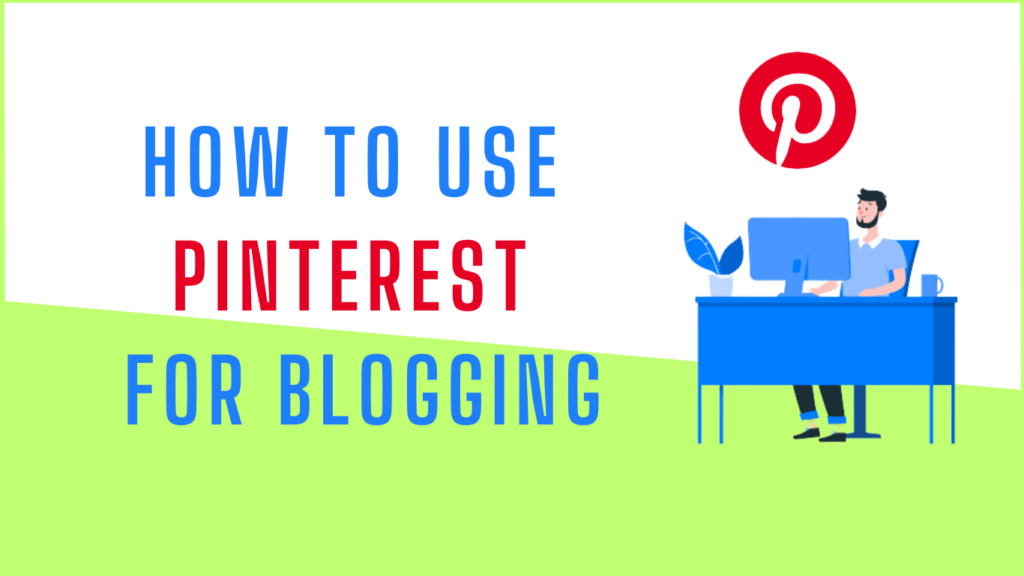How to Use Pinterest for Blogging
Pinterest has emerged as a powerful platform for bloggers to boost their online presence, drive traffic to their websites, and connect with a broader audience. With over 400 million monthly active users, Pinterest offers an exceptional opportunity for bloggers to showcase their content and engage with potential readers. In this article, we’ll delve into the strategies, tips, and best practices for leveraging Pinterest to supercharge your blogging journey.
What is Pinterest and How to Use Pinterest for Blogging?
Pinterest is a visual discovery and social media platform that allows users to discover, collect, and share ideas through images and videos, known as pins. For bloggers, Pinterest offers a unique chance to showcase their blog posts in a visually appealing manner, making it easier for users to find and save their content.
The platform’s image-focused nature makes it perfect for promoting blog posts with captivating visuals. When utilized effectively, Pinterest can become a significant source of referral traffic to your blog, helping you reach a larger audience and potential readers who might be interested in your niche.

Setting Up a Pinterest Account for Blogging
1. Creating a Business Account
To utilize Pinterest for blogging, it’s essential to have a business account. This not only provides access to valuable analytics but also unlocks various features designed specifically for businesses. Creating a business account is free and straightforward; it can be done by converting an existing personal account or signing up as a new user.
2. Optimizing Profile and Boards
A well-optimized Pinterest profile can make a lasting impression on potential readers. Use a professional profile picture, write a clear and concise bio that reflects your blogging niche, and include a link to your blog or website. Organize your boards neatly, ensuring they align with your blog’s topics and interests. Utilize relevant keywords in your profile and board descriptions to enhance searchability.
Creating Eye-Catching Pins
1. Design Tips
Pinterest users are drawn to visually appealing pins. Design eye-catching pins using high-quality images and compelling graphics that represent your blog content effectively. Vertical pins tend to perform better, as they take up more space in users’ feeds.
2. Utilizing Rich Pins
Rich pins provide additional information directly on the pin, making them more valuable and engaging. Enable rich pins for your blog to display essential details like the blog post’s title, author, and description. This added context encourages users to click through to your blog.
3. Adding Descriptions and Keywords
Accurate and keyword-rich pin descriptions improve discoverability. Craft engaging, keyword-optimized descriptions that convey the essence of your blog post. Incorporate relevant hashtags to increase the pin’s reach and exposure to a broader audience.
Understanding Pinterest SEO
1. Keywords and Hashtags
Keywords play a crucial role in Pinterest SEO. Conduct keyword research to identify popular search terms related to your blog’s topics. Strategically incorporate these keywords into your pins’ titles, descriptions, and board names.
2. Pin Titles and Descriptions
Create descriptive and informative pin titles that compel users to click on your content. Make sure the pin descriptions provide context and value, encouraging users to explore further by visiting your blog.
3. Utilizing Alt Text
Adding alt text to your pin images makes them accessible to visually impaired users and contributes to SEO. Use relevant alt text that accurately describes the pin’s content and includes appropriate keywords.
Joining and Creating Group Boards
1. Benefits of Group Boards
Group boards allow multiple collaborators to contribute pins, significantly expanding your content’s reach. Joining established group boards exposes your blog posts to a larger audience, potentially leading to more saves and click-throughs.
2. Finding and Joining Group Boards
Discover relevant group boards by searching for keywords related to your blog niche. Check the board’s description and guidelines to ensure it aligns with your content. Request an invitation to join or follow the board creator’s instructions to become a contributor.
3. Creating Your Own Group Board
Start your group board to foster a community of like-minded bloggers. Encourage others to contribute their pins, and be active in pinning valuable content from other members. This collaborative approach strengthens your blog’s network and visibility.
Pinning Strategies for Bloggers
1. Ideal Pinning Frequency
Consistency is key on Pinterest. Aim to pin regularly to keep your content visible in users’ feeds. Pinning a mix of your own blog posts and relevant content from others ensures a well-rounded and engaging profile.
2. Scheduling Tools and Best Times to Pin
Utilize scheduling tools like Tailwind to automate your pinning schedule. Analyze your Pinterest analytics to identify peak engagement times and schedule pins accordingly to maximize visibility.
Analyzing Pinterest Analytics
1. Understanding Pinterest Analytics Dashboard
Pinterest provides a comprehensive analytics dashboard that offers valuable insights into your pin performance, audience demographics, and top-performing boards.
2. Tracking Performance and Improving Strategies
Analyze your pin performance regularly to identify trends and patterns. Identify the content that resonates most with your audience and use these insights to refine your pinning and content creation strategies.
Pinterest Trends and Insights for Bloggers
1. Utilizing Pinterest Trends
Stay updated with the latest Pinterest trends to create timely and relevant content. Trending topics can provide inspiration for new blog posts and pins that are likely to capture users’ interest.
2. Keeping Up with Seasonal Content
Tailor your content to align with seasonal trends and holidays. Creating seasonal content makes your blog more relevant and shareable during specific times of the year.
Integrating Pinterest with Blog Content
1. Embedding Pins in Blog Posts
Embedding Pinterest pins in your blog posts encourages readers to save and share your content, increasing its visibility on the platform.
2. Encouraging Pinning from Blog Readers
Add social sharing buttons to your blog posts, allowing readers to easily pin your content to their Pinterest boards.
Promoting Your Blog on Pinterest
1. Collaborating with Influencers
Partner with influencers in your niche to promote your blog content. Their larger following can expose your pins to a broader audience and attract new readers.
2. Running Pinterest Contests and Giveaways
Contests and giveaways can generate excitement and engagement. Encourage users to participate by pinning your content and offering incentives.
Measuring Pinterest ROI for Blogging Success
1. Understanding Metrics and Conversions
Monitor key performance metrics such as click-through rates, saves, and website traffic. Focus on conversions, such as email sign-ups or product sales, to gauge the effectiveness of your Pinterest strategy.
2. Adjusting Strategies Based on Results
Use the data from Pinterest analytics to refine your pinning strategies continually. Experiment with different formats, designs, and posting times to optimize your performance.
Best Practices for Pinterest and Blogging
1. Avoiding Common Mistakes
Stay away from spammy tactics and avoid over-pinning your content in a short period. Instead, focus on quality pins that resonate with your audience.
2. Staying Consistent and Patient
Pinterest success takes time and consistency. Stay committed to your pinning strategy and remain patient as you build a strong presence on the platform.
Conclusion
Leveraging Pinterest for blogging can significantly impact your online presence and blog traffic. By following the tips and strategies outlined in this article, you can harness the power of Pinterest to attract a larger audience, connect with potential readers, and take your blogging journey to new heights.
FAQs
Q1: Can I use my personal Pinterest account for blogging?
Yes, you can convert your personal Pinterest account into a business account for blogging purposes. It’s a simple process that provides access to valuable analytics and features designed for businesses.
Q2: How many pins should I create daily to see results?
The ideal pinning frequency varies, but consistency is crucial. Aim to pin at least 10-15 quality pins per day, with a mix of your own content and relevant content from others.
Q3: How do I find relevant group boards to join?
Use Pinterest’s search feature to find group boards related to your blogging niche. Check the board descriptions and guidelines, and follow the board creators’ instructions to request an invitation to join.
Q4: Can Pinterest analytics help me improve my pinning strategy?
Absolutely! Pinterest analytics provides valuable insights into your pin performance, audience demographics, and top-performing boards. Use this data to refine your pinning strategy and create content that resonates with your audience.
Q5: Is it worth collaborating with influencers on Pinterest?
Collaborating with influencers in your niche can be highly beneficial. Their larger following can expose your pins to a broader audience, increasing the chances of attracting new readers and followers.
Other Resources:
- Hostinger Review in 2023.
- SiteGround Review in 2023.
- The Best Blog Writing Tools.
- How to Make Your Blog Posts Go Viral.
- How to Get Your Blog Up and Running in 7 Easy Steps.
- How To Make Money with Affiliate Marketing for Beginners in 2023.
- 5 Practical Things To Do After Starting A Blog.
- Social Media Promotion.
- Pick A Profitable Niche In 5 Minutes.
- Best Niches for Affiliate Marketing in 2023.
- 10 Tips for Creating Engaging Blog Posts.


